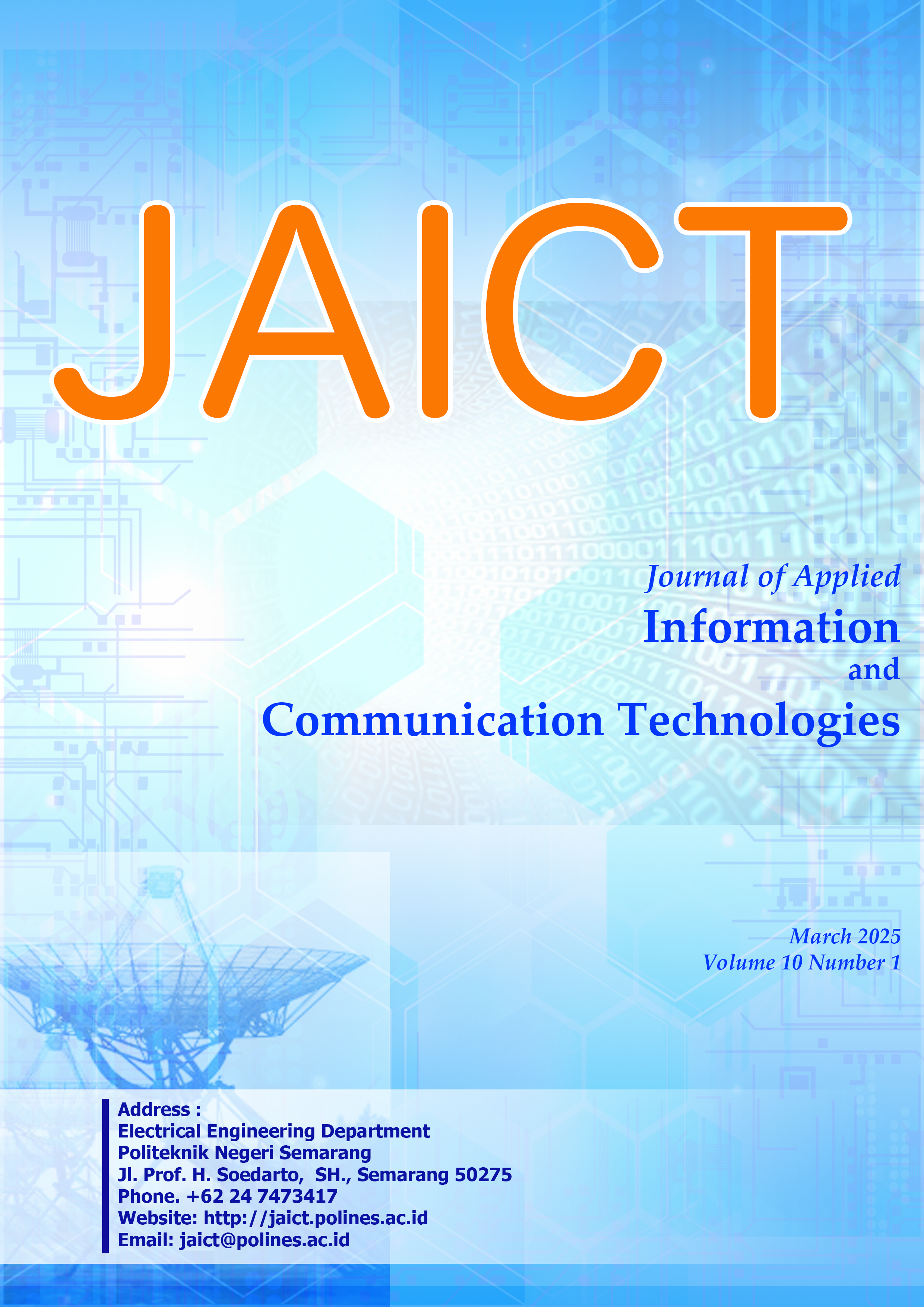Classification System of Crystal Guava (Psidium Guajava) Using Convolutional Neural Network And Rectrified Linear Unit Method Based on Android
DOI:
https://doi.org/10.32497/jaict.v10i1.6170Abstract
These instructions Abstract - However, determining the ripeness of fruit is frequently done by hand, which presents problems with consistency and efficiency. In order to improve the sorting of crystal guava fruit maturity, this study suggests combining machine learning technology with the creation of digital image-based apps. Fruit ripeness is classified using a convolutional neural network (CNN), a deep learning model, based on the color of its skin. It is anticipated that the method will increase productivity and offer superior precision while sorting crystal guava fruit. The System Development Life Cycle (SDLC) with a Waterfall approach is the methodology employed. The system design formed from the deep learning model resulted in excellent performance in classifying images of crystal guava fruit by utilizing model training from the base models ResNet50V2, DenseNet121, NASNetMobile, and MobileNetV2 with a combination of training using K-fold cross-validation with a 5-fold configuration. The best-trained model achieved an average highest accuracy of 99.92% in model training using MobileNetV2 with the lowest average loss value of 0.0088. The system application was developed using mobile Android, leveraging the Flutter framework and Dart programming language. The research results demonstrate a comparison of testing on crystal guava and local guava fruits against ripeness classification parametersDownloads
Published
Issue
Section
License
Copyright (c) 2025 JAICT

This work is licensed under a Creative Commons Attribution 4.0 International License.
Authors who publish with this journal agree to the following terms:Authors retain copyright and grant the journal right of first publication with the work simultaneously licensed under a Creative Commons Attribution License that allows others to share the work with an acknowledgement of the work's authorship and initial publication in this journal.
Authors are able to enter into separate, additional contractual arrangements for the non-exclusive distribution of the journal's published version of the work (e.g., post it to an institutional repository or publish it in a book), with an acknowledgement of its initial publication in this journal.
Authors are permitted and encouraged to post their work online (e.g., in institutional repositories or on their website) prior to and during the submission process, as it can lead to productive exchanges, as well as earlier and greater citation of published work (See The Effect of Open Access).






